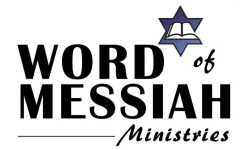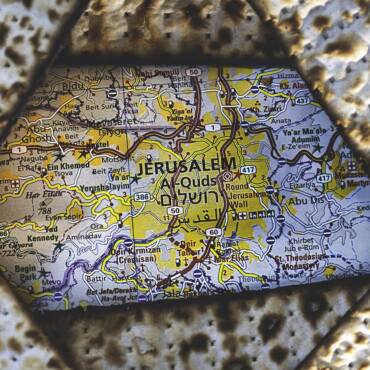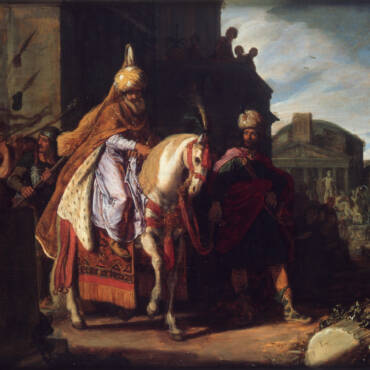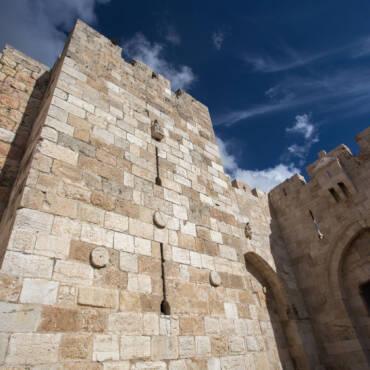The Fall Feasts: The Prophetic Picture

By Sam Nadler
The first four feasts of the Bible, Passover through Shavuot, occur in the Spring. They typify our salvation in Messiah Yeshua (I Corinthians 5:7). The number seven indicates completion. Hence the feasts of the seventh month are a prophetic picture of the Lord’s final work of redemption in the final three feasts.
Rosh HaShanah: The Feast of Trumpets
Yom Teruah, or The Feast of Trumpets, in Leviticus 23 is commonly called Rosh HaShanah or Jewish New Year. When the Jewish people came out of Babylonian captivity, they adopted the Babylonian civil New Year, occurring in Tishri, as their own. Corresponding with September, Tishri is a Babylonian word meaning “beginning.” Jewish tradition purports the blowing of trumpets is a reminder of the shofars used by Joshua and the Israelites at Jericho and the ram which Abraham sacrificed in place of Isaac. (Shofars are made from ram’s horns).
The feast of trumpets points forward to a time when Israel will be gathered back to the land (Isaiah 27:13). Biblically, the Feast signifies the ‘sounding of the shofar or trump of God’ when the Body of Messiah will be gathered with Messiah in the Rapture (1 Corinthians 15:51-52; Thessalonians 4:16-18). Because none of us knows the exact time of this future blowing of the trumpet, this feast should motivate us to readiness and service.
Yom Kippur: The Day of Atonement
The next feast is Yom Kippur, or Day of Atonement. Traditionally this is a time for Jewish people to “get right with God” individually. Biblically it is a day for Israel to be restored to God as a nation when they trust in the Messiah (Leviticus 16 an 23:26-32). This will come about through the tribulation period, or “the time of Jacob’s trouble” (Jeremiah 30:7). Anti-Semitism will reach an all time high as all the nations of the world come against Israel in an attempt to once and for all destroy the Jewish people. This time will prepare Israel for the coming King Messiah and His kingdom. At the end of the Tribulation period, the Jewish people will “look to Me (Messiah), the One they have pierced and mourn for Him as one mourns for a firstborn son” (Zechariah 12:10). In that day Israel will receive “cleansing from sin and impurity” (Zechariah 13:1); “the stone which the builders rejected shall be the chief cornerstone” (Psalm 118:22); the great confession of Israel will be lamented, “all we like sheep have gone astray, each one has turned to his own way, but the Lord has laid on Him (Messiah) the iniquity of us all (Isaiah 5:6). In that day, a nation shall be born in a day and “thus all Israel will be saved” (Romans 11:26)! Thus Yom Kippur, the Day of Atonement, reminds us the gathering of Israel is coming.
Sukkot: The Feast of Booths
The final feast is The Feast of Booths, Tabernacles, or Sukkot found in Leviticus 23:33-43. For the entire week of Sukkot, people build and live in “booths (sukkot).” These purposely frail structures picture our frailty when leaving Egypt and our total dependence on the Lord for provision and protection. Today as well we are to be “living pictures” of Messiah, our Booth. In Him we have our full provision and protection forever (John 7:37-39, Romans 8:1).
The feast is also called the Feast of Ingathering (Exodus 23:16). Today it is celebrated as a final harvest festival and is accompanied with great joy in the provision of God for His people. Zechariah prophesied that one day the nations will be ingathered to Messiah (14:2, 12-15). They will honor the King of kings, the Messiah of Israel, by celebrating the Feast of Booths in Jerusalem each year (16-19).
In the Fall Feast season, we see the seventh month as the time when God completes His redemption plan through the gathering of the Body (Feast of trumpets); the gathering of the nation of Israel (Day of Atonement); and the gathering of the nations (Feast of Booths).
In light of the prophetic picture of His plan, shouldn’t we share His Word with all who have ears to hear? Certainly to the Jew first (Romans 1:16-17)?



